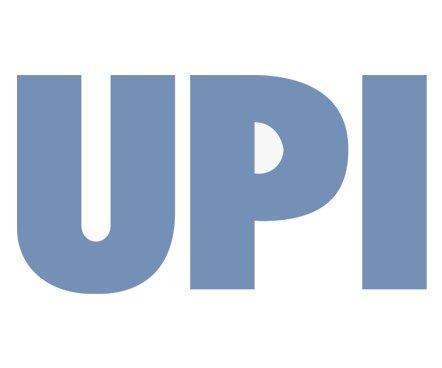An Iron Dome anti-missile defense battery is deployed on the outskirts of Jerusalem, Israel, September 9, 2013. The Iron Dome is designed to intercept and destroy incoming rockets and artillery shells. UPI/Debbie Hill |
License Photo
TEL AVIV, Israel, Dec. 10 (UPI) -- U.S. lawmakers have approved boosting funding for Israel's missile defense program by $173 million in fiscal 2014 as the Jewish state's military establishment draws up a new defense doctrine to protect cities from Hezbollah's growing missile arsenal.
The Jerusalem Post reported that Israeli military intelligence now believes that the Iranian-backed Lebanese movement now possesses around 5,000 long-range missiles that can reach Tel Aviv, the country's largest conurbation, and carry warheads packing between 1,300 pounds and one ton of explosives.
On Monday, leaders of the Senate and House of Representatives Armed Services Committees unveiled a cut-down defense authorization bill for the coming fiscal year that would boost U.S. missile defense spending by $358 million to $9.5 billion.
The legislation also authorizes additional funding of $173 million for joint missile defense projects underway with Israel.
Funds for collaborative missile projects with Israel are separate from the $3.1 billion in military aid the United States provides Israel annually.
The bill must now go before Congress for a final vote. The legislation's promoters called for a vote before the Legislature recesses for the end of the year.
The proposed funding includes nearly $34 million for the improving the high-altitude Arrow 3 system currently being developed by state-run Israel Aerospace Industries and the Boeing Co. of the U.S.
Arrow 3 comprises the upper level of a planned four-tier Israeli missile shield.
The system is designed to intercept Iran's Shehab-3b and Sejjil-2 ballistic missiles, including any armed with nuclear warheads, beyond Earth's atmosphere on the second half of their trajectory.
Ynet news, the English-language website of Israel's Hebrew daily Yediot Ahronot, has reported that two recent Arrow 3 trials demonstrated the system's "high reliability" and exceeded expectations.
Inbal Kreiss, who until recently headed the Arrow 3 program, told a seminar at Tel Aviv University that "the missile's ability to change course while reaching the targeted missile was proven beyond all doubt as the accuracy of interception high above the State of Israel was improved."
He said further tests will be conducted over the next 18 months, including at least one launch into space and "an experimental interception of a missile that simulates a long-range enemy missile with a range of about 1,250 miles."
Some $22 million of the $34 million the armed services committees earmarked for Arrow 3 will for developing the system's "kill vehicle," the interceptor designed to hit and destroy hostile missiles.
The earlier Arrow 2 variant remains in service, with batteries deployed in northern and central Israel. It operates at a lower altitude.
Once Arrow 3 is deployed, it will be used as a back-up for that system to pick off any missiles that get past it.
Additional back-up for Arrow 3 will come from David's Sling, a system to counter medium-range threats, now being developed by Israel's state-owned Rafael Advanced Defense Systems and the Raytheon Co. of the U.S. for the U.S. Missile Defense Agency and Israel's Missile Defense Organization.
The MDA requested further funding for Arrow 3 in April as part of a $220 million package for fiscal 2014.
The authorization bill now before the U.S. Congress includes an appropriation of $117.2 million for David's Sling, according to details released by the bill's sponsors.
This system will cover the gap between Arrow 2 and Rafael's Iron Dome system, designed to counter short-range missiles and rockets. It constitutes the bottom lawyer of Israel's missile shield.
Iron Dome became operational in early 2011 and by official count has successfully intercepted 84.6 percent of the targets it engaged in several clashes with Palestinian rockets.
The Israeli military currently has five batteries deployed, but it needs as many as 20 to ensure complete coverage of the country.
The compromise bill proposed by the two armed services committees supported a request by U.S. President Barack Obama for $200 million for Israel to buy additional Iron Dome batteries.
It also added $15 million to establish a co-production capability for Iron Dome components by Israel and the U.S., a move apparently intended to consolidate U.S. efforts to achieve greater joint production of the Israeli-designed missiles.
The renewed funding push also underlines U.S. efforts to ensure U.S. defense budget cuts do not affect military aid to Israel.















